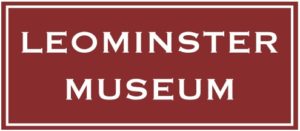Digital Interpretation Project
For some years the Museum’s electronic displays had been limited to fixed slide-shows or films, presented on unreliable desktop computer screens, with no visitor control over what was being shown. Most of the hardware was already showing its age, both technically and aesthetically, when donated second-hand in 2014.
We were therefore delighted to be informed in October 2018 that we had been awarded 100% funding from the tourism strand of the European Union’s LEADER scheme, to acquire brand new customised digital interpretation equipment. This was supplied and programmed to our requirements by Heritage Interactive, and the equipment was installed and operational by the time the Museum opened for the 2019 season.
The equipment comprises four elements:
- A proper video screen on the wall of the Cider House to display an updated version of the film kindly made available to us by Fair Oak Cider in 2016, to whom we are very grateful. This popular feature shows the real-life commercial use of a traditional horse-driven cider mill and hand-powered cider press, like the ones we have on display.
- An interactive free-standing photo kiosk allowing visitors to view a range of photographs (drawn from the Winterbourn archive, with kind permission from Herefordshire Museum Service) selected by the visitor on the touch-screen display.
- A listening post allowing up to two visitors at a time to listen (on hand-held earpieces) to highlights from some of the fascinating oral history interviews recorded by the Museum over the years – principally from the HLF-funded Reminiscences project of 2008-2010. A transcript can also be displayed on the control screen.
- An electronic museum guide on hand-held tablet computers made available to visitors, allowing them to explore the background to key parts of the Museum’s collection and history. This also makes it much easier for visitors who cannot use stairs to learn about material that is exhibited on the first floor of the building, or in cases that are not easily viewed other than from a standing position.
Adding and updating content as needed is straighforward; this is particularly important with the tablet guides, as some of our displays do change from year to year. Another core requirement of our planning for this project was that the equipment should be fully compatible with any future upgrade of the Museum buildings.
What was the LEADER scheme?
LEADER is a French acronym which roughly translates as ‘Liaison among Actors in Rural Economic Development’.
Grants under the LEADER scheme were funded by the European Agricultural Fund for Rural Development, and were part of the Rural Development Programme for England (RDPE) while the UK remained in the EU.
Money from the programme was given to Local Action Groups (LAGs), made up of local public, private and civil society representatives; they had the role of assessing applications and awarding grants locally to businesses and organisations that applied.. Nationally the LEADER scheme was managed by the Rural Payments Agency (RPA), through which the grant payments were made to successful applicants – albeit only after they had funded the project from other sources, which could be quite a challenge for bigger projects.


